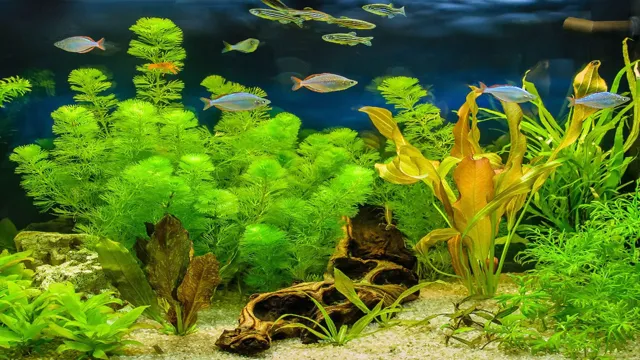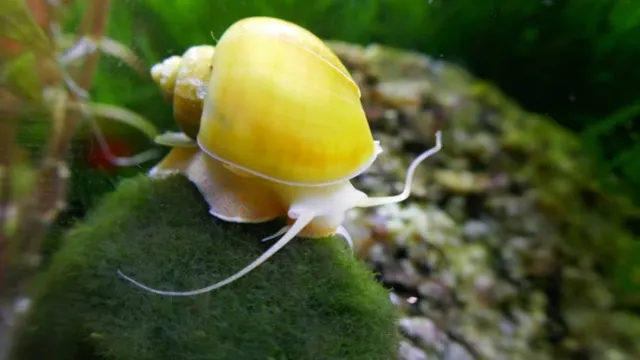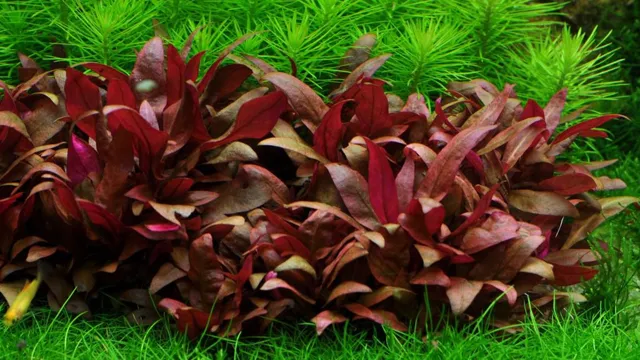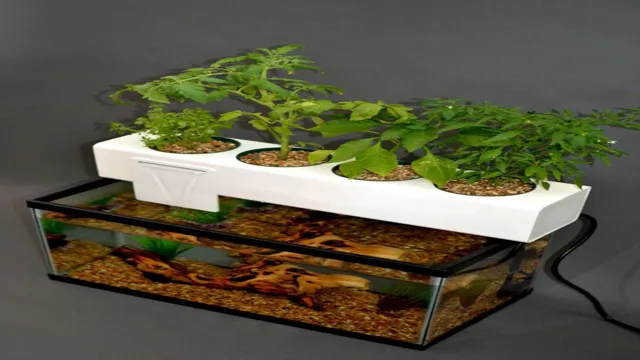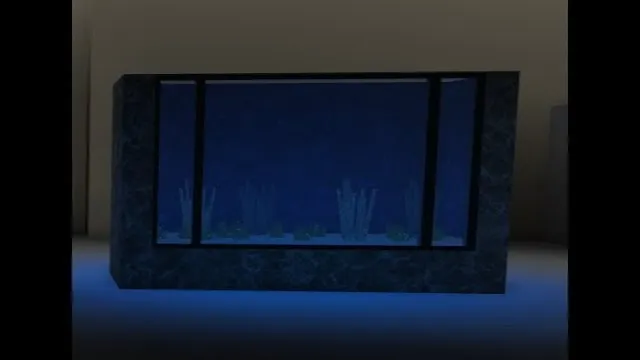Do you want to add some greenery to your aquarium but don’t know how? Growing live plants in an aquarium can seem like a daunting task, but with the right knowledge and tools, it can be quite easy and rewarding. Live plants not only add beauty to your aquarium, but they also provide numerous benefits such as oxygenation, filtration, and a natural habitat for your fish. In this blog, we’ll teach you how to grow live plants in your aquarium, from choosing the right plants to maintaining a healthy environment.
So, let’s dive in and create a lush aquatic world!
Why Live Plants are Beneficial for Aquariums
If you’re looking to add some life to your aquarium, live plants are a great option to consider. Not only do they provide a natural and aesthetically pleasing look, but they also offer numerous benefits for your aquatic pets. Live plants can help improve the overall health of your aquarium by producing oxygen and removing harmful toxins.
They also provide a source of food for some fish, as well as shelter and breeding areas for others. In order to successfully grow live plants in your aquarium, you will need to provide proper lighting, fertilization, and substrate. The type of plants you choose will also depend on factors such as the size of your aquarium, the type of fish you have, and the amount of light that is available.
With the right care and attention, however, adding live plants to your aquarium can be a rewarding and enjoyable experience for both you and your aquatic pets.
Benefits of Live Plants for Aquariums
When it comes to aquariums, live plants have a variety of benefits that make them a valuable addition to any tank. Aside from adding aesthetic appeal, live plants assist in creating a natural ecosystem for your aquatic pets. They provide oxygen, remove harmful chemicals, and serve as a natural habitat and food source for some fish and invertebrates.
Live plants can also help prevent algae growth and keep the water clean by absorbing excess nutrients. Interestingly, live plants can even improve the mental and emotional well-being of your aquarium inhabitants by reducing stress and creating a more peaceful environment. Overall, live plants are a worthwhile investment for any aquarium owner looking to enhance their tank’s health and beauty.
So why not consider adding some to your own aquatic space and watch as the benefits flourish?
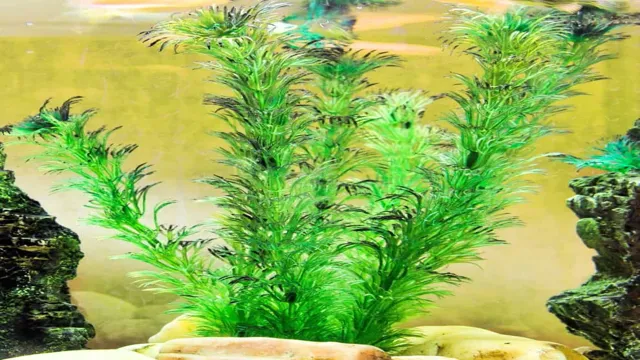
Types of Live Plants for Aquariums
Live plants are a wonderful addition to any aquarium for numerous reasons. Firstly, they create a beautiful and natural environment for your fish to swim in, which can reduce stress levels and improve overall health. Secondly, live plants help regulate the water in your tank by absorbing excess nutrients, reducing algae growth, and producing oxygen.
Lastly, live plants can act as a natural food source for your fish, providing them with valuable nutrients and helping to replicate their natural ecosystem. When selecting live plants for your aquarium, it’s important to choose those that are compatible with your fish species and tank conditions. Some popular options include Anubias, Java fern, Amazon swords, and Vallisneria.
Whether you’re a seasoned aquarist or new to the hobby, incorporating live plants into your aquarium can offer a range of benefits for both you and your aquatic pets.
Preparing Aquarium for Live Plants
If you’re interested in growing live plants in your aquarium, there are a few things you need to do to prepare your tank. The first step is to choose the right substrate, or the material at the bottom of your aquarium. Plants need nutrients to grow, so it’s important to choose a substrate that can support their growth.
Many people use a combination of sand and gravel, which allows for good water flow while still providing nutrients for the plants. Next, you’ll need to consider the lighting in your aquarium. Plants need light to photosynthesize and grow, so you’ll need to make sure your aquarium has adequate lighting.
Generally, aquarium plants require about 8-12 hours of light per day to grow properly. Be sure to choose a lighting system that’s appropriate for your tank’s size and the types of plants you want to grow. It’s also important to consider the water quality in your aquarium.
Live plants need clean, well-oxygenated water to thrive, so make sure you monitor the pH, ammonia, and nitrate levels regularly. You may also want to consider adding a CO2 system to help promote plant growth. Finally, choose the right plants for your aquarium. (See Also: How to Clean Aquarium with Live Plants: A Comprehensive Guide to Ensure Your Plants and Fish Thrive)
Some plants require more light and nutrients than others, so choose plants that are compatible with your tank’s lighting and substrate. Some popular aquarium plants include Anubias, Java Fern, and Amazon Swordplants. By taking these steps to prepare your aquarium for live plants, you’ll be well on your way to creating a healthy and beautiful aquatic environment.
With the right care and attention, your plants will thrive and provide a stunning backdrop for your aquatic creatures.
Choosing the Right Substrate
One of the most crucial steps in preparing an aquarium for live plants is choosing the right substrate. Substrate refers to the material at the bottom of the aquarium that provides physical support to the plants’ roots. It’s important to select a substrate that matches the specific needs of the plants you’re planning to grow.
For instance, some plants require a more nutrient-rich substrate, while others prefer a sand-based substrate. Some substrates may even alter the pH levels of your aquarium, which could have a negative effect on your plants’ growth. Therefore, take the time to research and choose the best substrate for your live plants.
This will ensure that your plants have a healthy foundation to grow from and thrive in your aquarium environment.
Creating the Right Lighting
When it comes to preparing your aquarium for live plants, creating the right lighting is crucial. It’s important to choose lighting that provides the ideal spectrum of light for photosynthesis, which is essential for the healthy growth of your plants. LED lights are a great option as they provide specific wavelengths of light that are easily absorbed by plants.
It’s important to note that not all plants require the same amount of light – some need more intense light while others prefer lower levels. Do your research to determine the optimal lighting conditions for each type of plant in your aquarium. Keep in mind that lighting intensity should also be adjusted according to the height of your plants.
By providing the right amount of light, you can ensure that your live plants thrive and create a beautiful and healthy environment for your aquatic pets.
Adding Nutrients to the Aquarium
When it comes to keeping live plants in your aquarium, it’s important to make sure your water is nutrient-rich to allow them to thrive. Before adding any plants, it’s recommended to prepare your aquarium by adding nutrients such as iron and potassium. There are a few different ways to do this, including using liquid fertilizers or root tabs.
Liquid fertilizers are added directly to the water, while root tabs are placed in the substrate to provide nutrients to the roots of the plants. It’s important to research the specific needs of your plants to determine the best method of nutrient delivery. By properly preparing your aquarium with the necessary nutrients, you’re setting your plants up for success and creating a beautiful, natural environment for your aquatic pets.
Planting the Live Plants in Aquarium
If you’re looking to add some live plants to your aquarium, there are a few things you should consider to ensure they thrive. First, make sure you have the right type of substrate in your tank so that your plants can root properly. Then, choose plants that are compatible with your aquarium’s lighting and water conditions.
When planting, be careful not to bury the roots too deep, and make sure the plants have enough room to grow. Consider adding a CO2 system to help your plants flourish and promote healthy growth. With proper care and attention, live plants can add beauty and natural filtration to your aquarium.
So why not give it a try and enjoy the benefits of having a thriving underwater garden in your home?
Planting Techniques
Planting live plants in an aquarium is a great way to add natural beauty to your underwater world. Before planting your new aquatic friends, it’s essential to ensure that your aquarium’s water parameters are suitable for the plants you have chosen. To get started, clean the gravel and place a layer of nutrient-rich soil at the bottom of the aquarium.
Once the soil is in place, begin planting your aquatic plants. Use small tweezers or your fingers to make a small hole in the soil to accommodate the plant’s roots. Gently position the roots and cover them with soil. (See Also: How to Build a Plywood and Acrylic Aquarium: A Step-by-Step Guide)
It’s important to note that plants require proper lighting, temperature, CO2, and nutrients to thrive in the aquarium. Adding a good quality fertilizer can help ensure healthy growth, and periodically trimming the plants can prevent overgrowth and maintain the aquarium’s aesthetic appeal. Overall, planting live plants requires careful consideration, but it’s well worth it for the benefits they bring to your aquarium.
Maintaining the Live Plants
Planting live plants in aquariums is an exciting and refreshing way to maintain the ecosystem of your aquatic wonderland. The first step in planting live plants is choosing the right species that can thrive in an aquatic environment. Some great options include anubias, java ferns, and hornwort.
Once you have chosen the plants, it’s important to ensure that the soil substrate is rich in nutrients. You can use soil fertilizers or add root tabs so that the plants can absorb the necessary nutrients. After preparing the soil bed, carefully place the plants into the substrate by burying the roots deep into the soil.
Make sure the plants have enough space to grow because overcrowding can lead to poor growth and deteriorate water quality due to decaying leaves. With regular maintenance of proper lighting conditions and nutrition, live plants can add vibrancy and natural ambiance to your aquatic habitat, creating a thriving ecosystem for your fishes, invertebrates and other creatures.
Common Problems and Solutions
If you’re struggling with how to grow live plants in your aquarium, you’re not alone! One common issue is algae growth. While some algae is okay, too much can harm your plants and even the fish in your tank. To combat this, consider adding a few fast-growing plants to outcompete the algae for nutrients.
Another problem you might encounter is low light levels. Without enough light, your plants won’t be able to photosynthesize and grow. Adding an aquarium light can help solve this problem.
Lastly, be mindful of your plant’s specific needs. Different species require different levels of nutrients, CO2, and pH. Research what your specific plant needs and adjust your aquarium accordingly.
By addressing these common issues and tailoring your aquarium to your plants’ specific needs, you can successfully grow live plants in your aquarium.
Algae Growth
Are you tired of dealing with the frustrating problem of algae growth in your water? Don’t worry, you’re not alone. Algae growth is a common issue that many people face when they have standing water, such as in a pond or a pool. The good news is that there are solutions to help prevent and control algae growth.
One of the most effective solutions is to use an algae inhibitor, which can be added to the water to stop the growth of algae before it even begins. Additionally, maintaining a proper balance of chemicals and regularly cleaning the water can also help keep algae at bay. Don’t let algae ruin your water fun, take steps now to prevent and manage it.
Lack of Oxygen
Lack of Oxygen is a common problem faced by many individuals across the globe. It can be caused due to a variety of reasons including high altitude, respiratory diseases, and even a sedentary lifestyle. The human body needs oxygen to function properly, and a lack of it can result in impaired bodily functions.
Some of the common symptoms of oxygen deprivation include shortness of breath, headaches, fatigue, and dizziness. Fortunately, there are several solutions available to tackle this problem. One of the simplest ways is to engage in regular physical exercise, which helps boost lung capacity and increases oxygen intake.
Another way is to maintain good posture, which helps the lungs to function optimally. In more severe cases, oxygen therapy may be required to ensure adequate oxygen levels. The bottom line is that lack of oxygen is a serious problem, but with the right solutions, it can be effectively managed.
Pests on Plants
Pests on Plants can be a real problem for gardeners and can cause damage to your crops. Some common pests include aphids, spider mites, and whiteflies. They can cause damage by eating your plants or sucking the sap out of them. (See Also: How to Make Your Own Aquarium: A Step-by-Step Guide for Beginners)
It can be frustrating to see your plants looking sickly and weak, but there are some solutions available to help combat the problem. One option is to use insecticidal soap, which is a natural solution that can help kill the pests and protect your plants. Another option is to use ladybugs, which are natural predators of aphids and can help keep the population under control.
You can also try using neem oil or kaolin clay to help deter pests from your plants. Overall, it’s important to keep a close eye on your plants and take action quickly if you notice signs of pest infestation. By being proactive and using the right solutions, you can help protect your plants and keep your garden thriving.
Conclusion
In conclusion, growing live plants in your aquarium is not just about adding beauty to the environment, but it also aids in creating a healthy ecosystem for your aquatic friends. To ensure optimal growth, you’ll want to keep in mind key factors such as lighting, substrate, and CO2 levels. But don’t worry, with a bit of patience, research, and trial and error, you’ll soon have a lush and thriving underwater garden that will have your fish and visitors alike, swimming in awe and admiration.
“
FAQs
What are some live plants suitable for aquariums?
Some popular live plants for aquariums include java moss, anubias, and amazon sword plants.
How much light do live plants in aquariums need?
The amount of light needed for live plants in aquariums varies, but generally, 8-10 hours of moderate lighting per day is sufficient.
What nutrients do live plants in aquariums need?
Live plants in aquariums require a variety of nutrients, including nitrogen, phosphorus, and potassium. These can be provided through plant-specific fertilizers or through regular water changes.
How do you plant live plants in an aquarium?
Live aquarium plants should be gently planted in the substrate, being careful not to damage the fragile roots. The plant should be placed so that the crown is just above the substrate.
How often should live plants in aquariums be trimmed?
Live aquarium plants should be trimmed as needed to remove any dead or damaged leaves. If the plant becomes too large for the tank, it may need to be pruned regularly to prevent it from taking over.
How can you prevent algae growth in an aquarium with live plants?
Proper maintenance and nutrient levels can help prevent excess algae growth. It is important to avoid overfeeding fish, limit exposure to direct sunlight, and perform regular water changes.
How can you propagate live plants in an aquarium?
Many live aquarium plants can be propagated by taking cuttings or separating runners from the main plant. These can be replanted in the substrate to form new plants.

